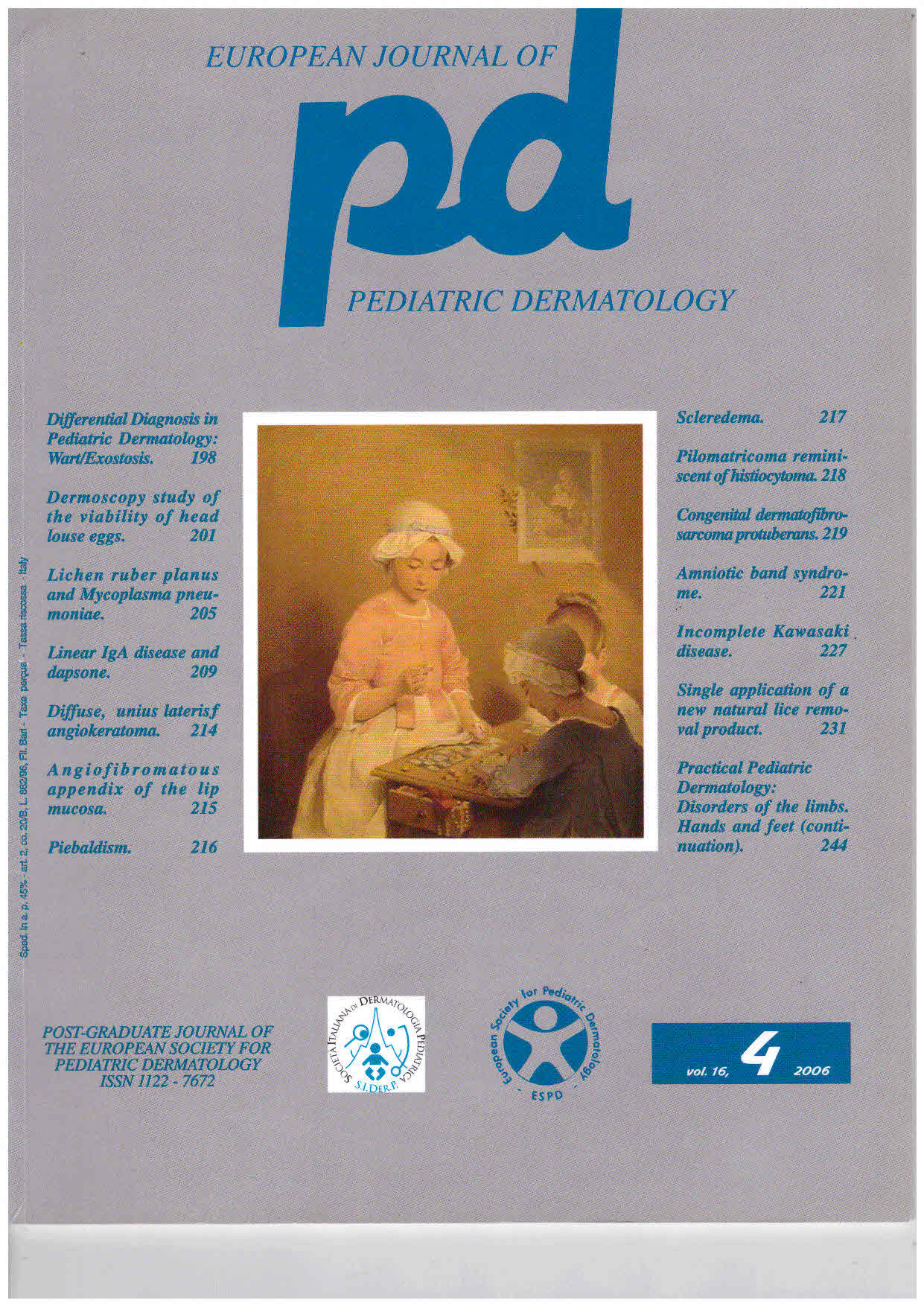Incomplete Kawasaki disease.
Downloads
How to Cite
Shelleh H.H. 2006. Incomplete Kawasaki disease. Eur. J. Pediat. Dermatol. 16 (4):227-30.
pp. 227-230
Abstract
Kawasaki disease (KD) is the second most important cause of acquired heart diseases in children if not diagnosed and treated early. Incomplete Kawasaki disease refers to the incomplete and atypical cases in which the clinical findings available are lesser than required by the diagnostic criteria to set up this diagnosis. These are believed to be the hidden part of the KD iceberg. We reviewed the current diagnostic criteria of Kawasaki disease, trying to look for the gap where incomplete KD (either atypical or incomplete) cases are leaking through. We propose that the high diagnostic line of the current diagnostic criteria is the cause of many misdiagnoses, which are retrospectively labeled as incomplete KD, but pass secretly to the complication field to hit the heart. The current diagnostic criteria could have been more sensitive and comprehensive if they had taken into account the wide clinical polymorphism of KD and the most prevalent laboratory changes. Therefore, it is important to modify them so that they can pick up the incomplete/atypical cases in the early stage to prevent the severe cardiac complications of the disease.Keywords
6E syndrome, Incomplete Kawasaki disease, Diagnostic criteria

